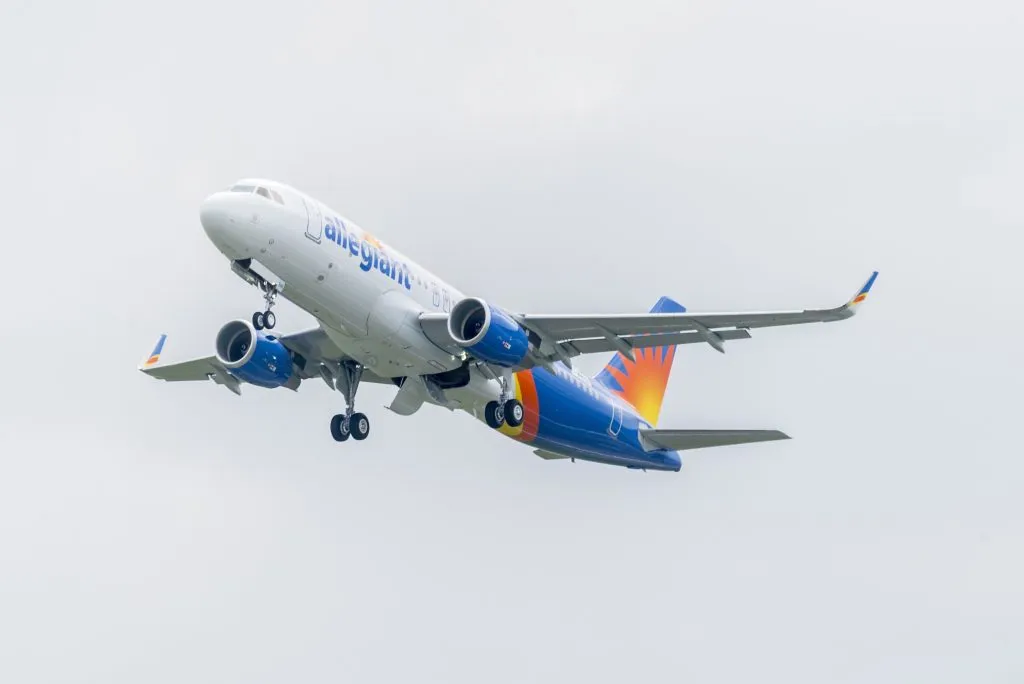Skift Take
Allegiant said it saw the "end of history" on March 1, but its focus on domestic, primarily leisure flights gives it cause for optimism. Still, the airline doesn't think a meaningful recovery will occur until sometime next year at the earliest.
Allegiant always has taken pride in being different. When other airlines zigged — adding new premium cabins and beefing up their presence in key business markets — Allegiant zagged — keeping its sights on leisure travel from secondary markets to primarily sun-soaked vacation destinations. And that relentless focus on its core leisure traveler stood it in good stead when the airline industry virtually collapsed in the teeth of the Covid-19 pandemic.
To be sure, it still was a terrible quarter for the historically profitable airline. “We continue to be the best of the worst,” CEO Maurice Gallagher told analysts on the company’s third-quarter earnings call. The pandemic is a “generational event that has changed how we think,” he said. “So it was after March 1 of this year, it was the end our history as we know it.”
The airline has not sat still. It expects to furlough up to 130 pilots by November 1, on top of the dozens of employees that have either been laid off or have taken voluntary separation packages. Using a common metric in the airline industry, Allegiant had 50 full-time equivalent employees per aircraft at the end of last year. Next year, it expects that number to fall to 38 full-time employees per aircraft.
It has focused on conserving cash and cutting costs beyond labor. The carrier reported its daily cash burn was just $1.3 million in the second quarter. In September, its cash-burn rate broke even. It has parked five aircraft in the desert and has permanently retired eight.
Join Us For Our Skift Aviation Forum Online Conference November 19
Allegiant’s Advantages
Allegiant’s network is unique in the U.S. airline industry. It specializes in nonstop flights to domestic leisure destinations. This benefits the airline in two ways. First, business and international travel have virtually evaporated, hurting airlines like Delta, United, and American, which focused on those segments of the market. Leisure and family-visit travel is rebounding, although slowly. Allegiant’s competitors are pouring flights into Florida and to the Western Mountain states to capitalize on beach and ski travel. But so far, Allegiant hasn’t seen this new competition eat into its markets, Gallagher said.
Second, passengers are more likely to book nonstop flights, rather than connecting through a hub airport, due to fears of exposure to the virus. “Customers we surveyed with travel booked already regardless of the airline told us the single factor that most impacted their purchase decision…was finding a nonstop flight,” said Allegiant Chief Marketing Officer Scott DeAngelo.
Allegiant also reports that it sees “pandemic fatigue” setting in, spurring more passengers to book leisure and family-visit travel. People are now weighing the risk of travel and know more about how to keep themselves safe, Gallagher said. Bookings have risen correspondingly, stabilizing at around 25 percent below last year’s levels, which is up from the 90 percent below 2019 that Allegiant saw in April. Bookings were at about $2 million per day in the third quarter, but have risen to $3 million per day so far in the fourth quarter. “It appears the U.S. domestic leisure space will pull itself up and out of the pandemic in the coming months, hopefully in 2021,” Gallagher said.
Pandemic opportunities
Allegiant has made a habit of buying older aircraft, rather than new models. That began to change a few years ago, when it started buying new Airbus A320-family aircraft to replace its fleet of aging MD-80s. Gallagher sees an opportunity now, as airlines around the world retire planes and downsize their fleets. This relative glut of aircraft on the market has driven prices down. “We continue to see an influx of potential deals for used A320s at prices significantly discounted from pre-Covid levels,” Allegiant Chief Financial Officer Gregory Anderson said.
Although Allegiant has no intention of buying aircraft, it’s looking ahead to after the pandemic subsides, when its competitors may not have the financial wherewithal to add to their fleets. “The post-Covid environment may provide a unique opportunity to either strategically replace aircraft and/or grow our fleet depending on demand,” Anderson continued. “At the economics we are seeing, such deals should lead naturally in averaging down our ownership cost, further improving our already industry-leading low fixed cost structure.”
The numbers still are bad
Allegiant reported a third-quarter loss of $29.1 million, compared with a $43.9 million profit in 2019. Revenues fell 54 percent to $200 million. It flew 47 percent fewer passengers in the quarter compared with 2019, on 6.5 percent less capacity. The carrier expects fourth-quarter passenger traffic to rise, however, as bookings for the year-end holidays are stronger than had been previously forecast. The company ended the quarter with $710 million in available cash, after raising $185 million in the quarter.
“The only way back will be one step at a time as it appears,” Gallagher said. “In the early days, we had little to no view on how we were going to get back to the top if we had fallen into this abyss. Today, however, we have a good sense of where we are and are beginning to believe we can return to our former state.”
Register Now For Skift Aviation Forum, Happening Online November 19
The Daily Newsletter
Our daily coverage of the global travel industry. Written by editors and analysts from across Skift’s brands.
Have a confidential tip for Skift? Get in touch
Tags: allegiant air, las vegas
Photo credit: Allegiant lost a lot of money in the second quarter but is optimistic about the future. P. Pigeyre / Airbus
